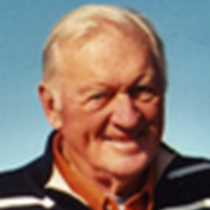The Columbia River
Moving from dam to dam on the famous Columbia River, especially when autumn colors are ripe and basalt formations stand against the sky, is a contemplative experience. The locks at Bonneville, The Dalles, John Day (113 feet – the highest in the Western world) and McNary are different - and yet similar. Transiting the massive Corps of Engineers locks can at first evoke “oohs” and “ahs” from guests, but after the Expedition Leader explained the locking process, everyone began to take the experience in stride. When leaving McNary lock going north and then cruising between the basalt walls of Wallula Gap, a brilliant orange sunset filled the sky.
This morning the Historian offered the first of two Lewis & Clark talks. This one, entitled “Jefferson Looks West,” noted the Enlightenment, Imperialism, the search for peltry, and Jefferson’s design and personality as bedrocks of the Corps’ westward trek. M/V Sea Lion guests, many of whom had read Lewis & Clark material including the popular Undaunted Courage by Stephen Ambrose, were given several other titles to help open doors to the early 19th century world of Lewis & Clark. Of special interest was James Ronda’s Lewis and Clark Among the Indians, recommended by the Historian as the best literary comparison between how Native and Corps participants understood - and misunderstood - each other.
Also, in the morning, Bighorn Sheep were seen high atop Washington hills. That sighting was unusual because undulating wheat ranches, railroad tracks, roads and small farms characterize the surrounding lowlands. The Washington hillsides held patterns of emerald green vineyards. Trains on both sides of the river kept us company while barges frequently emerged from the locks. In fact, all of the above amounted to grand entertainment on the greatest river west of the Rocky Mountains.
Nature’s wonders on both sides of the Cascade Mountains were described by the Naturalist in an afternoon talk. Her presentation was interspersed with photos depicting Native culture and the brilliant colors of both human and botanical subjects. The transitional zone for trees and plants was explained, and in fact will be within reach of guests in a day or two during our return trip near The Dalles, Oregon.
At dusk, guests gathered in the lounge for wine-tasting accompanied by a wide assortment of Pacific Northwest cheeses, sea-foods, mustards and other garnishes. Lewis & Clark never had it this good!
Moving from dam to dam on the famous Columbia River, especially when autumn colors are ripe and basalt formations stand against the sky, is a contemplative experience. The locks at Bonneville, The Dalles, John Day (113 feet – the highest in the Western world) and McNary are different - and yet similar. Transiting the massive Corps of Engineers locks can at first evoke “oohs” and “ahs” from guests, but after the Expedition Leader explained the locking process, everyone began to take the experience in stride. When leaving McNary lock going north and then cruising between the basalt walls of Wallula Gap, a brilliant orange sunset filled the sky.
This morning the Historian offered the first of two Lewis & Clark talks. This one, entitled “Jefferson Looks West,” noted the Enlightenment, Imperialism, the search for peltry, and Jefferson’s design and personality as bedrocks of the Corps’ westward trek. M/V Sea Lion guests, many of whom had read Lewis & Clark material including the popular Undaunted Courage by Stephen Ambrose, were given several other titles to help open doors to the early 19th century world of Lewis & Clark. Of special interest was James Ronda’s Lewis and Clark Among the Indians, recommended by the Historian as the best literary comparison between how Native and Corps participants understood - and misunderstood - each other.
Also, in the morning, Bighorn Sheep were seen high atop Washington hills. That sighting was unusual because undulating wheat ranches, railroad tracks, roads and small farms characterize the surrounding lowlands. The Washington hillsides held patterns of emerald green vineyards. Trains on both sides of the river kept us company while barges frequently emerged from the locks. In fact, all of the above amounted to grand entertainment on the greatest river west of the Rocky Mountains.
Nature’s wonders on both sides of the Cascade Mountains were described by the Naturalist in an afternoon talk. Her presentation was interspersed with photos depicting Native culture and the brilliant colors of both human and botanical subjects. The transitional zone for trees and plants was explained, and in fact will be within reach of guests in a day or two during our return trip near The Dalles, Oregon.
At dusk, guests gathered in the lounge for wine-tasting accompanied by a wide assortment of Pacific Northwest cheeses, sea-foods, mustards and other garnishes. Lewis & Clark never had it this good!




